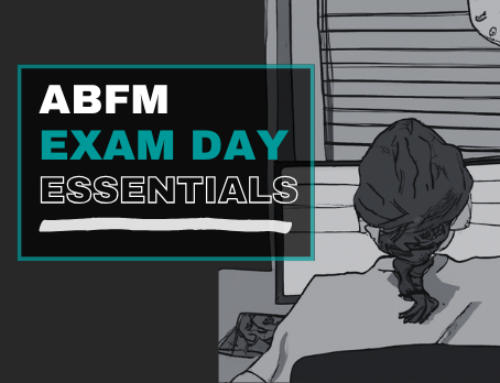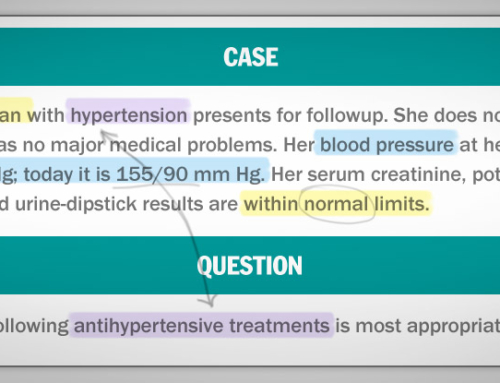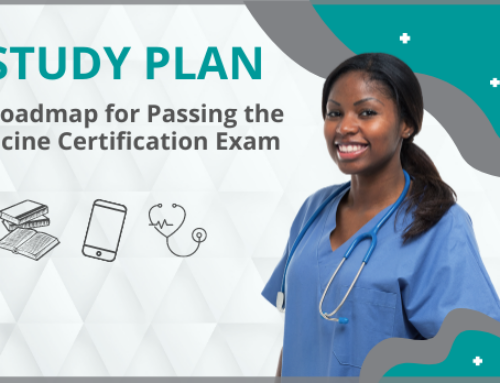Editor’s Note: This post about one physician’s experience with ABIM maintenance of certification was previously published in CardioExchange, an online community hosted by the New England Journal of Medicine and NEJM Journal Watch. John E. Brush, MD, is a practicing cardiologist and professor of medicine at Eastern Virginia Medical School.
A petition to recall the American Board of Internal Medicine’s (ABIM) changes to Maintenance of Certification (MOC) has over 17,000 signatures. The petition calls for the ABIM to revert to the old method of simply certifying physicians using a test administered every 10 years.
I didn’t sign the petition, but I am also unhappy. I think the ABIM ought to eliminate the every-10-years secured exam and go with a more continuous testing approach. And I think the whole thing is way too expensive.
I am “grandfathered in” for internal medicine and general cardiology, but not for Interventional Cardiology. I could probably coast to retirement, but I decided to maintain my certification. At the last ACC (American College of Cardiology) meeting, I got started.
First, I went to an MOC session headed by Rick Nishimura and Pat O’Gara on valvular heart disease. I have to say that it was the best learning experience I have had in many years. The case-based format was engaging and the content was skillfully delivered. And I received 10 points of Medical Knowledge MOC credit, as well as CME credit.
Next, I sat down with an ABIM staff member who was available at the ACC meeting to ask about the Performance Improvement Module. I told her that I have worked on quality improvement at my hospital for over 20 years. I attend a monthly committee meeting where we go over a mountain of data pertaining to the quality of cardiac surgery and catheterization laboratory procedures. I said that it didn’t make sense for me to design a little performance improvement project when I was already involved in quality improvement, big time. She agreed and said that, for me, the “Completed Project Performance Improvement Module (PIM)” was the way to go.
I came home and designed my own Completed Project PIM. I had a head start because my hospital participates in the National Cardiovascular Data Registry (NCDR) and I had already signed up for the NCDR Physician Dashboard. So I had ready access to my own NCDR data to use for my PIM.
I went to the ABIM website and found my way to the Completed Project PIM. The website led me to the Measures Library, but also gave me the option to submit my own measures for approval.
If you don’t use measures in the Measures Library, you are required to submit three of your own measures, and these measures require ABIM approval. My measures were:
- Rate of radial access procedures among my patients undergoing diagnostic cardiac catheterization and percutaneous coronary intervention.
- Percentage of my patients undergoing percutaneous coronary intervention (PCI) procedures that were appropriate according to published appropriate use criteria.
- Percentage of my patients undergoing PCI who were discharged on a statin medication.
The NCDR dashboard gave me a ready data source for these measures. Others may want to design different measures, built around the data that are available on the NCDR dashboard or perhaps the PINNACLE Registry. The ABIM requires measurement from two time periods and a minimum of 25 patients.
On the ABIM website, I had to fill in the title and description of each measure and a reference to a guideline recommendation that justified each measure. I filled in the form and submitted my measures by hitting the submit button on the website. In less than 24 hours, I received an email from the ABIM approving them.
The website automatically knew that my measures were approved and it led me to the next step of reporting my results. It asked me a few additional questions, and that was it! All told, over 2 days, I probably put about 3 hours into the activity. With the Completed Project PIM, the ABIM acknowledged that I had already done the work. It was a matter of documenting what I had been doing already.
Let’s face it. The public will always demand that doctors are certified by an independent, objective certifying organization. None of us likes the added work that certification creates, but it is unavoidable. The changes in the ABIM requirements have created a lot of confusion, but the website helps you navigate through the changes, and for me, the ABIM staff was available and helpful.
I would rather have a series of small projects and learning modules, creating an atmosphere of continuous learning and improvement, rather than the big 10-year exam. To me, the petition asked for the wrong thing. I would eliminate the big exam and stick with the other stuff, which isn’t so bad after all.
We look forward to hearing about your own experiences with ABIM maintenance of certification. To find out everything you need to know about MOC, visit our ABIM MOC Requirements page.









Unfortunately, I suspect NEJM is not an independent voice because they do internal medicine board review courses that give MOC credit. Therefore, there is an inherent bias towards ABIM.because a relationship exists..
My personal experience with MOC:
I completed 60 points toward 100 needed for MOC about 2 years ago including a practice module that was very time consuming.. All that work was completely discarded when ABIM began their new MOC this year. Changing the rules in the middle of our re-accreditation cycle is very unfair. Imagine if you did the work above plus several other rmodules based on existing rules and then the ABIM flippantly ignores all of it and has you start all over again. It’s no wonder some of us are aggravated to say the least.
As a general internist working in a student health clinic, my practice is very different from the cardiologist above. I completed a smoking cessation practice module through the University of Wisconsin.The module was a very good learning experience. However, I could only apply it to my practice and not to the clinic as a whole ( i don’t have the authority to do so). Consequently, no significant changes could be made to the practice.without buy in from other clinic employees. I saw this problem at the beginning but ABIM would not allow me to do another module once this one had been chosen.
My main problem with MOC is that internal medicine is very broad with physicians working in many types of settings. An internist working in the ER may want to be aware that there are new guidelines for the management of elevated cholesterol but not need to know them intimately compared to an internist in private practice. My practice in student health makes the knowledge of atrial fibrillation and latest guidelines on when to anti-coagulate such patients to be not very important. As a result, I find MOC knowledge and practice modules to not be relevant in many cases and I could better spend my time and money on improving myself in areas more specific to my practice.
I already do a lot of reading and CE towards licensure, which ABIM does not recognize. ABIM is out of touch with. physicians that they certify. It is a lot of extra work for which the value, relevance and cost is questionable., Whether the typical MD can complete a module in 3 hours as stated in the above example or whether that cardiologist is in a unique situation is what I would question. I spent a lot more time than that on my module. and all for nothing.
Because ABIM MOC has prompted a re-evaluation of the entire accreditation process, I think it is a good thing..As a primary care physician, I find all these rules and regulations to be increasingly burdensome.Consequently, I will leave the practice of medicine earlier than I would like to do and I would generally discourage others from coming into the profession.
Thank you for your comment. We understand a lot of people have objections to MOC, and your story is sure to resonate with them. It is true that we are providing a product that offers MOC points, but we hope that our blog serves as a forum for open discussions about these issues.
I’m Sooo Confused!! Do we have to register to take the exam just to get the MOC credits (e.g. from MKSAP) or can we just get the MOC and take the exam Later??
Registering to take the exam is different from enrolling in MOC. To receive credit from the ABIM and have your MOC points automatically transmitted to the ABIM (if available on the MOC activity), you must first enroll in the Maintenance of Certification Program. Please contact the ABIM Diplomate Services Center directly as they can look up your account, check your enrollment status and let you know what you need to do. Diplomate Services can be reached at (800)-441-ABIM (2246) Monday through Friday, 8:30 a.m. to 8:00 p.m., and Saturday, 9:00 a.m. to 12:00 p.m. EST.
You may also want to take a look at their page on the changes announced on February 2015:
http://www.abim.org/maintenance-of-certification/moc-faq/changes-announced-2-3-15.aspx